第15章 THE COUNTESS AND THE COZENER(1)
It is hardly likely when that comely but penniless young Scot Robert Carr, of Ferniehurst, fell from his horse and broke his leg that any of the spectators of the accident foresaw how far-reaching it would be in its consequences.It was an accident, none the less, which in its ultimate results was to put several of the necks craned to see it in peril of the hangman's noose.
That divinely appointed monarch King James the Sixth of Scotland and First of England had an eye for manly beauty.Though he could contrive the direst of cruelties to be committed out of his sight, the actual spectacle of physical suffering in the human made him squeamish.Add the two facts of the King's nature together and it may be understood how Robert Carr, in falling from his horse that September day in the tilt-yard of Whitehall, fell straight into his Majesty's favour.King James himself gave orders for the disposition of the sufferer, found lodgings for him, sent his own surgeon, and was constant in his visits to the convalescent.Thereafter the rise of Robert Carr was meteoric.Knighted, he became Viscount Rochester, a member of the Privy Council, then Earl of Somerset, Knight of the Garter, all in a very few years.It was in 1607 that he fell from his horse, under the King's nose.In 1613 he was at the height of his power in England.
Return we for a moment, however, to that day in the Whitehall tilt- yard.It is related that one woman whose life and fate were to be bound with Carr's was in the ladies' gallery.It is very probable that a second woman, whose association with the first did much to seal Carr's doom, was also a spectator.If Frances Howard, as we read, showed distress over the painful mishap to the handsome Scots youth it is almost certain that Anne Turner, with the quick eye she had for male comeliness and her less need for Court-bred restraint, would exhibit a sympathetic volubility.
Frances Howard was the daughter of that famous Elizabethan seaman Thomas Howard, Earl of Suffolk.On that day in September she wouldbe just over fifteen years of age.It is said that she was singularly lovely.At that early age she was already a wife, victim of a political marriage which, in the exercise of the ponderous cunning he called kingcraft, King James had been at some pains to arrange.At the age of thirteen Frances had been married to Robert Devereux, third Earl of Essex, then but a year older than herself.The young couple had been parted at the altar, the groom being sent travelling to complete his growth and education, and Frances being returned to her mother and the semi-seclusion of the Suffolk mansion at Audley End.
Of the two women, so closely linked in fate, the second is perhaps the more interesting study.Anne Turner was something older than the Countess of Essex.In the various records of the strange piece of history which is here to be dealt with there are many allusions to a long association between the two.Almost a foster-sister relationship seems to be implied, but actual detail is irritatingly absent.Nor is it clear whether Mrs Turner at the time of the tilt-yard incident had embarked on the business activities which were to make her a much sought-after person in King James's Court.It is not to be ascertained whether she was not already a widow at that time.We can only judge from circumstantial evidence brought forward later.
In 1610, at all events, Mrs Turner was well known about the Court, and was quite certainly a widow.Her husband had been a well-known medical man, one George Turner, a graduate of St John's College, Cambridge.He had been a protege of Queen Elizabeth.Dying, this elderly husband of Mistress Turner had left her but little in the way of worldly goods, but that little the fair young widow had all the wit to turn to good account.There was a house in Paternoster Row and a series of notebooks.Like many another physician of his time, George Turner had been a dabbler in more arts than that of medicine, an investigator in sciences other than pathology.His notebooks would appear to have contained more than remedial prescriptions for agues, fevers, and rheums.There was, for example, a recipe for a yellow starch which, says Rafael Sabatini, in his fine romance The Minion, she dispensed as her own invention.This had become so widely fashionable for ruffs andpickadills that of itself it had rendered her famous.'' One may believe, also, that most of the recipes for those perfumes, cosmetics, unguents and mysterious powders, liniments and lotions asserted to preserve beauty where it existed, and even to summon it where it was lacking,'' were derived from the same sources.
Hutchinson, 1930.
There is a temptation to write of Mistress Turner as forerunner of that notorious Mme Rachel of whom, in his volume Bad Companions, Mr Roughead has said the final and pawky word.Mme Rachel, in the middle of the nineteenth century, founded her fortunes as a beauty specialist (?) on a prescription for a hair-restorer given her by a kindly doctor.She also `invented' many a lotion and unguent for the preservation and creation of beauty.But at about this point analogy stops.Both Rachel and her forerunner, Anne Turner, were scamps, and both got into serious trouble--Anne into deeper and deadlier hot water than Rachel--but between the two women there is only superficial comparison.Rachel was a botcher and a bungler, a very cobbler, beside Anne Turner.
Edinburgh, W.Green and Son, Ltd., 1930.